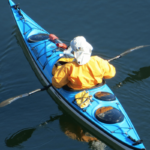Rowing competitions, a thrilling testament to human endurance and teamwork, vary in length, offering spectators and participants alike a diverse range of challenges and excitement. Whether you’re a seasoned rower curious about different competitions or a newcomer eager to understand the sport’s demands, this exploration into the lengths of rowing races will provide intriguing insights. Uncover the factors that influence these distances and discover what makes each race uniquely captivating in the world of rowing.
Types of Rowing Competitions
The world of rowing competitions is vast and varied, with events that cater to different types of rowers, boats, and distances. Understanding these differences is essential for both participants and enthusiasts. The most common distinction is between sweep rowing and sculling. In sweep rowing, rowers hold one oar with both hands, while in sculling, they use two oars. This fundamental difference dictates the style of the boats, team coordination, and the skills required.
Another critical differentiation is between sprint and long-distance races. Sprint races, usually held over a 2000 meter course, are the standard in Olympic and international competitions. They demand explosive power and speed. Contrastingly, long-distance rowing events, like the famed Head of the Charles Regatta, can cover distances of 3 miles (approximately 4800 meters) or more, challenging the endurance and strategy of the crews.
Indoor rowing competitions have also gained popularity, thanks to the accessibility of rowing machines. These events remove variables such as water conditions and weather, focusing purely on the athlete’s power and stamina. Indoor races can vary in distance but often mirror the 2000 meter sprints found in outdoor competitions.
| Type of Competition | Distance | Key Characteristics |
|---|---|---|
| Sprint | 2000 meters | Fast-paced, requires explosive power |
| Long-Distance | 4800 meters + | Endurance-focused, strategic |
| Indoor | Varies | Focus on power and stamina, weather-independent |
| Sweep Rowing | 2000 meters | Team coordination, one oar per rower |
| Sculling | 2000 meters | Two oars per rower, technical precision |
Further Insights into the Types of Rowing Competitions
Delving deeper into the types of rowing competitions, it’s clear that the diversity of these events is designed to showcase the various skills and attributes of rowers. From the sheer power required in sprint races to the endurance and strategy needed for long-distance events, rowing competitions offer a broad spectrum of challenges. Indoor rowing competitions add another layer, allowing athletes to compete in controlled conditions, focusing solely on technique and power. This variety ensures that rowing remains a dynamic and inclusive sport, accessible to a wide range of athletes and appealing to a diverse audience of sports enthusiasts.
Understanding the Variable Nature of Rowing Competitions
The duration of a rowing competition can vary significantly depending on several factors, including the type of event, the level of competition, and the specific conditions on the day of the race. Standard sprint races, which are the most common type of rowing competition, typically cover a distance of 2,000 meters. For elite rowers, these races can last anywhere from 5 to 7 minutes, depending on the conditions such as wind and water currents. However, for collegiate and amateur rowers, the times might be slightly longer.
Another factor that influences the duration of a rowing race is the category of the boat. For instance, an eight (8+) – a boat with eight rowers and a coxswain – will generally complete the 2,000-meter course faster than a single scull (1x), due to the greater power output and speed. Moreover, head races, which take place in the fall, cover longer distances, usually between 3,000 and 6,000 meters, and can last from 15 to 20 minutes or more. These races are against the clock, with boats starting at intervals, making them a different challenge from the side-by-side racing seen in sprint races.
Environmental conditions play a crucial role in determining the exact duration of a rowing race. Factors such as the course’s altitude, the temperature, and the presence of wind or currents can all impact the speed at which rowers can complete the course. These variables make it difficult to predict the exact time it will take to finish a race, adding an element of unpredictability to the sport of rowing.
Factors Influencing Rowing Race Durations
| Factor | Impact on Duration | Example |
|---|---|---|
| Distance | Variation in race length | 2,000m vs. 6,000m |
| Boat Category | Different speeds for different boats | 8+ faster than 1x |
| Environmental Conditions | Wind, currents, and temperature affect speed | Headwind vs. Tailwind |
| Competition Level | Elite rowers are faster than amateurs | Olympics vs. Collegiate |
| Type of Race | Sprint vs. Head races | Side-by-side vs. Time-trial |
Standard Race Distances
The world of rowing offers a diverse range of competitions, each with its own set of standard race distances. Understanding these distances is crucial for both athletes and enthusiasts as they prepare for or follow the sport. The most common race distance, recognized globally, is the 2,000 meters stretch, a benchmark for international competitions, including the Olympics and World Championships. This distance is hailed for testing both the endurance and sprint capabilities of athletes.
However, the rowing spectrum also includes shorter races, such as the 1,000 meter events, often seen in junior and masters competitions. These races demand a higher intensity level from the start, pushing rowers to showcase their speed and power over a shorter distance. On the other end of the spectrum, long-distance rowing events, such as head races, extend over 5,000 to 7,000 meters. These races are predominantly held in the autumn and are famous for their strategic demands, requiring rowers to navigate through challenging courses with varying currents and turns.
Further Insights into Standard Race Distances
Understanding the nuances of these standard distances helps spectators and participants grasp the strategic intricacies involved in rowing competitions. Each distance offers a unique test of skill, endurance, and team coordination, making rowing a multifaceted sport that appeals to a wide range of athletic abilities and interests.
A Deeper Dive into Rowing Strategies Across Distances
Rowing strategies significantly change with the distance of the race. In shorter 1,000 meter sprints, rowers focus on explosive power and quick starts, aiming to gain an advantage early in the race. In contrast, the classic 2,000 meter races require a balanced approach, blending a strong start with a sustainable pace and a strategic sprint finish. Long-distance events demand careful pacing and stamina, along with the ability to navigate and adapt to the course’s natural and environmental challenges.
| Distance (meters) | Event Type | Focus |
|---|---|---|
| 1,000 | Junior/Masters | Speed & Power |
| 2,000 | International/Olympics | Endurance & Strategy |
| 5,000 – 7,000 | Head Races | Stamina & Navigation |
| Varies | Indoor Rowing | Personal Endurance |
In conclusion, the standard race distances in rowing cater to a broad spectrum of athletic prowess, from explosive sprints to endurance marathons. This variety ensures that rowing remains an inclusive and challenging sport, inviting competitors and fans to engage deeply with its strategic and physical demands.
Sprint vs. Long-Distance Races
The world of rowing competitions is diverse, encompassing a wide range of distances to cater to different levels of skill, stamina, and strategic prowess. Sprint races in rowing are characterized by their short, intense nature, typically covering distances of 2,000 meters or less. These races demand a high level of power and speed from the athletes, as each stroke propels the boat in a burst of energy that is both thrilling and demanding. In contrast, long-distance races extend much further, anywhere from 6,000 meters to marathon lengths exceeding 42,195 meters. Such events test the rowers’ endurance, pacing strategy, and mental tenacity over a prolonged period.
While sprint races can be over in a matter of minutes, with elite competitions lasting around 5 to 7 minutes, long-distance races can span from 20 minutes to several hours, depending on the exact distance and conditions. The Oxford and Cambridge Boat Race, for example, is a famous long-distance rowing event that covers a course of 6,779 meters (4.2 miles), highlighting not just physical endurance but also the strategic depth required in navigating and pacing through the course. Similarly, the Head of the Charles Regatta extends over a distance of 4,800 meters, offering a different set of challenges with its winding course and variable weather conditions.
Understanding the distinctions between sprint and long-distance rowing races is essential for appreciating the diverse skill sets and strategies employed by rowers. Whether it’s the explosive energy of a sprint or the sustained effort of a long race, each format presents unique challenges that test the limits of human performance on the water.
- Distances covered in rowing competitions
- Characteristics of sprint races
- Characteristics of long-distance races
- Examples of famous long-distance rowing events
- Strategic differences between sprint and long-distance races
Indoor Rowing Competitions
Indoor rowing competitions, a staple of the rowing community, have surged in popularity due to their accessibility and the minimal equipment required. These events mimic the physical and mental challenges of outdoor rowing, offering athletes a year-round opportunity to compete, regardless of weather conditions. The duration of these competitions varies significantly, depending on the event format. Typically, races are measured in meters, with common distances being 2,000 meters for individual events and longer for team relays. The 2,000-meter race, a standard benchmark in rowing, usually takes elite rowers approximately 6 to 7 minutes to complete, while longer distances and team events naturally extend the competition time.
One of the most appealing aspects of indoor rowing competitions is their inclusivity. They cater to a wide range of participants, from professional athletes to fitness enthusiasts. Furthermore, these events often feature multiple categories based on age, weight, and gender, ensuring that everyone has a fair chance to compete. The setup for these competitions involves ergometers (rowing machines) that are linked to software, allowing for accurate measurement of each participant’s performance and enabling real-time feedback and race simulations. This technological integration not only enhances the competitive experience but also allows for global participation through online competitions, breaking down geographical barriers and fostering a broader community spirit among rowers.
Another key aspect of indoor rowing competitions is the emphasis on technique and stamina. Unlike outdoor rowing, where water conditions and boat coordination play significant roles, indoor rowing focuses purely on an athlete’s power, endurance, and technique. This purity of competition makes it an excellent way for rowers to train and measure their progress individually.
- 2,000 meters Individual Race
- Team Relays
- Lightweight and Open Weight Categories
- Junior, Senior, and Masters Divisions
- Virtual and Global Online Competitions
Enhancing Indoor Rowing Competitions Through Technology
With advancements in technology, indoor rowing competitions have evolved to offer a more immersive and competitive experience. Ergometers equipped with sophisticated software not only track performance metrics but also enable participants to compete in virtual environments, simulating outdoor conditions. This technological leap has not only made the sport more accessible but also more engaging, allowing rowers to connect and compete with peers from around the world, all from the comfort of their own homes or local gyms.
The integration of live streaming and online leaderboards further amplifies the excitement around these events, making it possible for friends, family, and fans to follow the action in real-time. This level of connectivity and community involvement is transforming indoor rowing from a training activity into a highly competitive and spectator-friendly sport. As technology continues to advance, the future of indoor rowing competitions looks both promising and exhilarating.
Factors Affecting Race Duration
The duration of a rowing competition can vary significantly due to several key factors. Understanding these elements is crucial for both participants and spectators to set their expectations correctly and appreciate the intricacies of the sport.
First and foremost, the distance of the race is a primary determinant of its duration. Standard competitive distances range from 2,000 meters for Olympic and international competitions to shorter sprints or longer head races that can extend up to several miles. Naturally, the longer the distance, the more time athletes will spend on the water.
Another critical factor is the type of boat used. Different classes of boats, such as singles, doubles, quads, or eights, possess varying speeds. Eights, being larger and more powerful due to the number of rowers, typically complete courses faster than singles or doubles. The design and weight of the boat also play a role, with sleeker, lighter boats achieving higher speeds.
Lastly, environmental conditions such as wind, current, and water temperature can significantly impact race times. Strong headwinds can slow boats down, while a favorable tailwind can assist in achieving faster times. Similarly, currents can either act as an ally or adversary, depending on their direction relative to the racecourse.
| Factor | Impact on Duration | Variable Components |
|---|---|---|
| Distance | Longer distances increase duration | 2,000 meters, sprints, head races |
| Type of Boat | Varies with boat speed and design | Singles, Doubles, Quads, Eights |
| Environmental Conditions | Wind and current can decrease or increase duration | Headwind, Tailwind, Water currents |
| Rowers’ Skill | Higher skill levels can decrease duration | Technique, Stamina, Experience |
| Equipment Quality | Better equipment can lead to faster times | Boat material, Oars, Rowing machines |
In summary, the duration of a rowing competition is not a fixed measure but one that fluctuates based on a combination of distance, boat type, and environmental conditions. This variability adds to the excitement and unpredictability of rowing as a sport, making each race a unique challenge for the athletes involved.
International Competitions Schedule
The world of rowing is vibrant and dynamic, with international competitions marking the pinnacle of achievement and athleticism. These events are meticulously planned to cater to the elite level of competitors, coaches, and spectators who gather from around the globe. The schedule for international rowing competitions typically spans across various seasons, accommodating both indoor and outdoor events. Among the most prestigious is the World Rowing Championships, which usually takes place towards the end of the summer, often in August or September. This timing leverages the optimal weather conditions and aligns with athletes’ peak performance periods after a rigorous training season.
Furthermore, the Olympic Games, held every four years, feature rowing as a core sport, drawing immense global attention. The rowing events in the Olympics adhere to a strict schedule over a week, showcasing a wide array of boat classes. Another key component of the international rowing calendar is the World Rowing Cup series, comprising three regattas that occur in the lead-up to the World Championships. These regattas are strategically placed across different continents, promoting a global participation and audience.
The duration of races in these competitions can vary, with the standard 2000 meters course taking elite rowers approximately 5 to 7 minutes to complete, depending on the boat class and conditions. Shorter sprint races, particularly popular at indoor events or special regattas, can be as brief as 500 meters, offering a thrilling and fast-paced spectacle.
Key International Rowing Events
| Event | Typical Duration | Location |
|---|---|---|
| World Rowing Championships | 1 week | Varies annually |
| Olympic Games Rowing Regatta | 1 week | Varies by Olympiad |
| World Rowing Cup Series | 3 weekends | Global locations |
| European Rowing Championships | 3-4 days | Varies annually |
| Henley Royal Regatta | 5 days | Henley-on-Thames, UK |
The international rowing calendar is a testament to the sport’s global appeal and the dedication of its athletes. Each competition, whether on the serene lakes of Europe or the dynamic waterways of Asia, contributes to the rich tapestry of rowing’s history and its future. The meticulous organization behind these events ensures that rowing continues to thrive on the world stage, offering moments of triumph, determination, and unity.
As we look forward to the upcoming competitions, it’s clear that the spirit of rowing transcends borders, bringing together communities in a celebration of strength, endurance, and sportsmanship. The international schedule not only highlights the physical prowess of the athletes but also the enduring appeal of rowing as a sport that is both ancient and ever-evolving.
I’m Adam Reynolds, a dedicated sports writer with a passion for both competitive gaming and betting. In my mid-thirties, I dive deep into the world of sports, providing insightful analyses and strategies to help readers make informed betting decisions. My experience spans various sporting events, where I blend my love for the game with a keen eye for betting trends. Whether I’m dissecting game tactics or offering betting tips, I aim to deliver content that is both engaging and practical. Join me as we explore the exciting intersection of sports and betting together.





